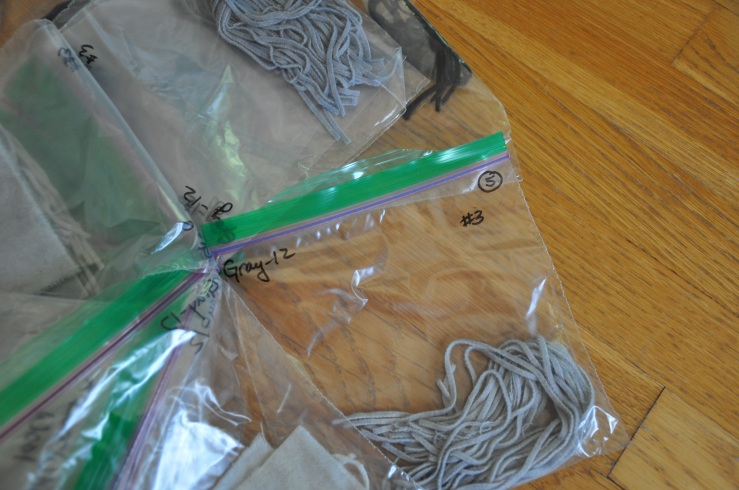Do you work on multiple rug hooking projects at the same time? Do you often have leftover strips of wool after you’ve finished a project? I do!

I frequently work on two or three rug hooking projects simultaneously. I use a wide variety of cuts and colors in my projects, and I also often use techniques that require a large number of swatches, such as double swatching. The passing of time also complicates effectively keeping track of what each swatch I’m using is for. While working on so many different rugs, a significant amount of time can pass before I return to a project to finish it. That can make it tough to remember which swatches I was using. The same is true for keeping track of leftover strips, so that they can be used in a new project months, or even years, after I’ve last needed them.
With so many variables, it can get very complicated very fast trying to keep track of all the strips of wool that you have. Some rug hookers use Sally Sorters, Strip Sorters, or other tools to help with this problem. These tools never quite worked as the perfect solution for me, because I would need so many sorters. Instead, I came up with an easy way to keep track of my wool, and document the specific details for each swatch, using only materials I could find in my home.
I use Ziploc bags, a large safety pin, and a Sharpie to organize my swatches. I use one Ziploc bag to store each value of my swatch. I label each Ziploc bag with the information I want to remember, including the swatch name, the value, and the cut of the strip. I then pin the bags from the swatch together in order from the lightest to the darkest value. If I’m using a swatch that is dyed over a colored wool, I include that base wool as a value zero.

Documenting all of this information allows me to easily deal with potential issues like cutting new strips (because I know exactly what width the original strips were) and dyeing new wool (because I know exactly what color, value, and base wool were used in the original strips). I like to include any information that I think will be useful on the bags.

Another advantage to this method is it keeps the wool dust down, and I don’t have to deal with dust spreading to other strips while I’m hooking. Also, when a project is finished, the bags can be re-purposed for the next one.
If you’ve been struggling with keeping track of your strips and keeping your work area tidy and organized, then I hope this method helps you as much as it helped me!
If you have any questions for Ania, feel free to leave them in the comments below! Have a restful Labor Day weekend!
Seems like a good idea to me! I’m going to try it!
LikeLiked by 1 person
I hope it works well for you!
LikeLike
Very helpful hint -thank you for sharing
—————————————–From: “My Mother’s a Hooker”
To: smkilg@maine.rr.com Cc: Sent: Saturday August 31 2019 12:51:54PM Subject: [New post] Tips & Tricks: Organizing Swatch Strips
WordPress.com
The Waspsuu posted: “Do you work on multiple rug hooking projects at the same time? Do you often have leftover strips of wool after you’ve finished a project? I do! I frequently work on two or three rug hooking projects simultaneously. I use a wide variety of cuts and colo”
LikeLiked by 1 person
Glad it’s helpful!
LikeLike